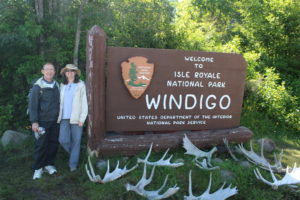 Many people are getting ready for summer vacations now. Being an expert at visiting National Parks (well, maybe not an expert, but I have visited and worked at a lot of them) I thought I would give you the benefit of my experience. Thus, today’s post is a how to guide for visiting a national park.
Many people are getting ready for summer vacations now. Being an expert at visiting National Parks (well, maybe not an expert, but I have visited and worked at a lot of them) I thought I would give you the benefit of my experience. Thus, today’s post is a how to guide for visiting a national park.
Before you hit the road, do your homework. The National Park Service has a wonderful website that is constantly updated at nps.gov. You can search for a specific park by name, look at what parks are in a state, or see a map of all 417 National Park sites. Every park site has a “plan your visit” menu on their website with pertinent information. You can see where to stay, what to do, and times the park is open or closed.
Most National Park sites also have a Facebook page, which tends to have the most up-to-date information. If there are any special events coming up, they are more likely to be on the Facebook page than the website. If you are planning on a special event that is weather dependent, a cancellation notification will be on the Facebook page.
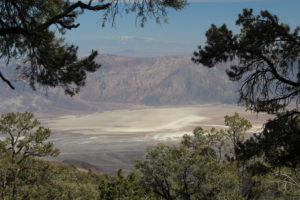
Think about how long you want to stay at a particular site. Most people do not stay long enough to really get to know a park. The average park visit is under four hours, and this includes parks such as the Grand Canyon and Death Valley which are HUGE! I understand the limits of vacations, but think about what you want to see and do in a place and give yourself enough time. The Jr. Ranger programs are wonderful and most take at least an hour. Unless the park is really small, plan on spending at least a day in a place. In one day you can see the movie, talk to a ranger, take a hike, and hit some of the highlights.
Make reservations for the things you want to do. If you are going to Cumberland Island, the ferry often sells out a week in advance. I’m sure the same is true for the Statue of Liberty. You have to reserve up to a year in advance to ride the mules in the Grand Canyon or raft the Colorado River.
Know what time the park closes. Some parks are open 24 hours a day. Some are only open from 9 to 5. Rangers hate it when visitors come in five minutes before the park closes and expect to see the park. Show some respect to the history or nature of the site you are visiting.
A few days before you visit a park check out the park alerts on the website. Sometimes there are trail or road closures. After Hurricane Matthew, many of the southeast parks closed for several days to a month. You don’t want to plan on a favorite hike only to find out a bridge is out one mile into the hike.
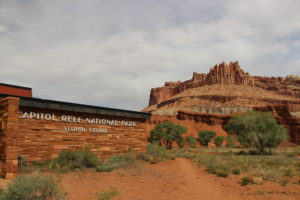 Now that you have done your homework, you are ready to visit the park. Start at the Visitors Center. After all, you will probably want to use the restroom after driving all the way to the park! Go inside the Visitors Center and check it out. Look at the interpretive displays and explore the museum.
Now that you have done your homework, you are ready to visit the park. Start at the Visitors Center. After all, you will probably want to use the restroom after driving all the way to the park! Go inside the Visitors Center and check it out. Look at the interpretive displays and explore the museum.
There is usually a movie and I recommend seeing the movie if you can. The National Park Service has worked really hard to redo most of the movies and they can be the best part of a visit. Any battlefield’s movie will give you more details on the battle than you could get on your own. The movie tries to put the park in some kind of historical context. Many times we have people come out of the movie saying “I never knew . . .”
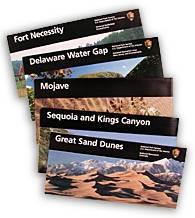
Talk to a ranger or a volunteer. Ask for the ranger’s recommendation on the best hike, the best viewpoint, or even the best place to eat lunch. The rangers live in the parks and they love the park where they are working. They want you to see it to best advantage.
Before you leave the Visitors Center, get your National Park Passport book stamped and pick up a unigrid. Unigrid is the official name for the brochure that any national park has. The unigrid has concise information about the park that you should know before you leave. Some people use the passport stamp on the unigrid so they can remember when they visited that park.
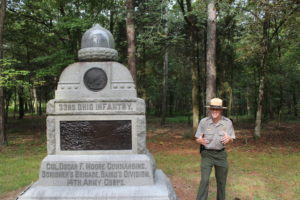
Take a ranger-guided tour or listen to a ranger talk. Most of these are very interesting with the rangers telling you things you would not learn otherwise. It is a way to get the inside story and be able to ask questions. Rangers point out all kinds of things you would never notice on their own. And if you get a volunteer ranger (like Tom or me) don’t feel you are getting second best. The volunteers work just as hard to make their talks as interesting as the rangers talks.
Take a hike. At the Grand Canyon, the vast majority of visitors never leave the scenic overlooks. Walking just a little way down a trail can give you a crowd-less perspective on the park. The rangers are happy to recommend a hike that will fit your time-frame and ability. Most parks have some kind of handicapped-accessible trail. The large parks rank their hikes by distance and difficulty. But know your limits and take food and water! You don’t want to be one of those hikers who has to be rescued.
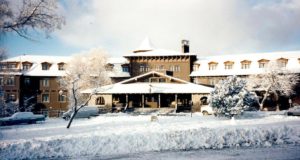
When Tom and I are visiting, we love to stay in one of the historic lodges in the National Parks. They can be expensive, and you have to reserve a room well in advance, but you have access to the park after most of the tourists leave. When you stay in a historic lodge, you are right in the middle of the park. You have the opportunity to beat the people driving into the park on the trails and to watch magnificent sunrises and sunsets. Some of our fondest memories are things we did late at night or early in the morning when most people are gone.
Take advantage of our national park sites by visiting as many as you can. They are a diverse bunch of places and each has a story to tell and things to teach you. The rangers and volunteers will do everything they can to make sure you have a good time (within park rules, of course). Do your homework, talk to the people who work at the park, and get out into the park. If you follow these guidelines, your visit will create memories for a lifetime.
